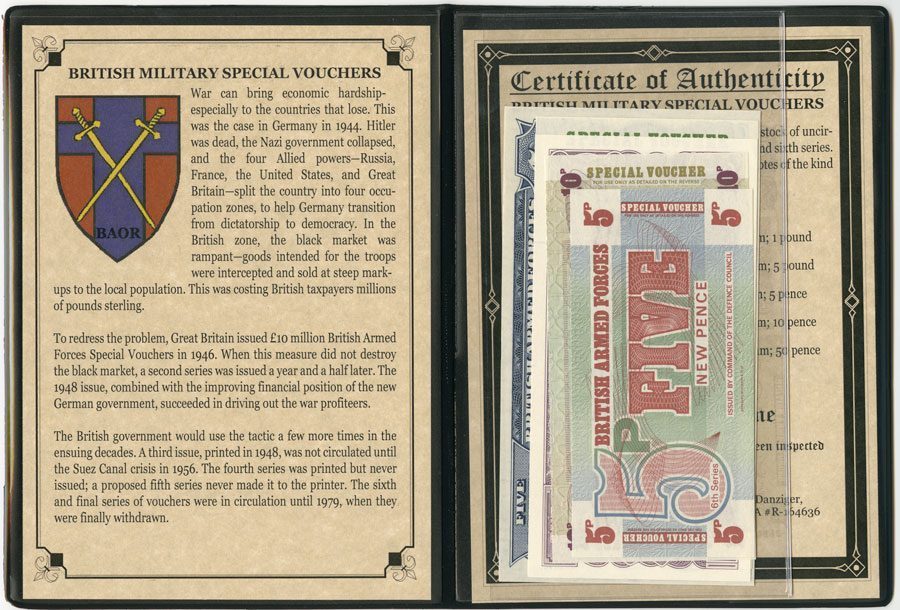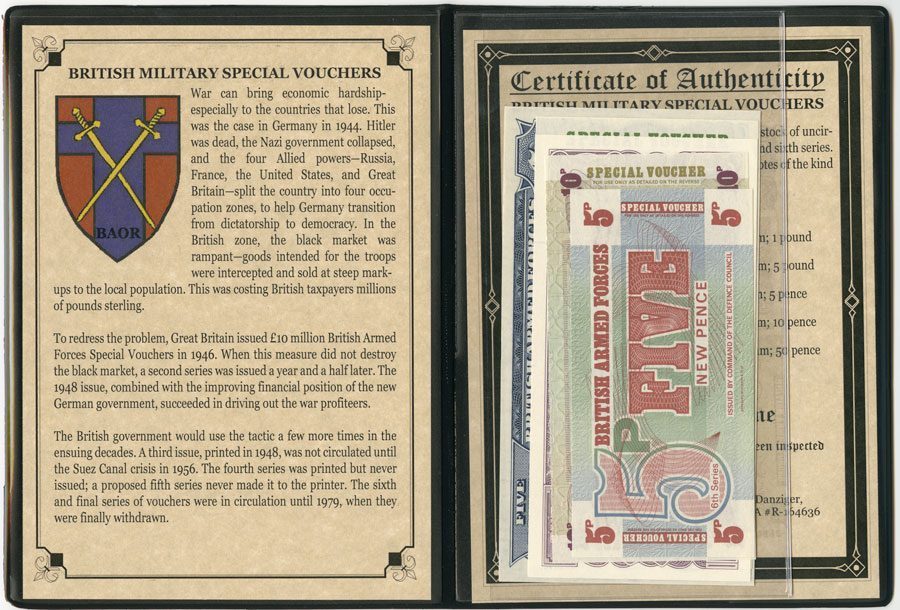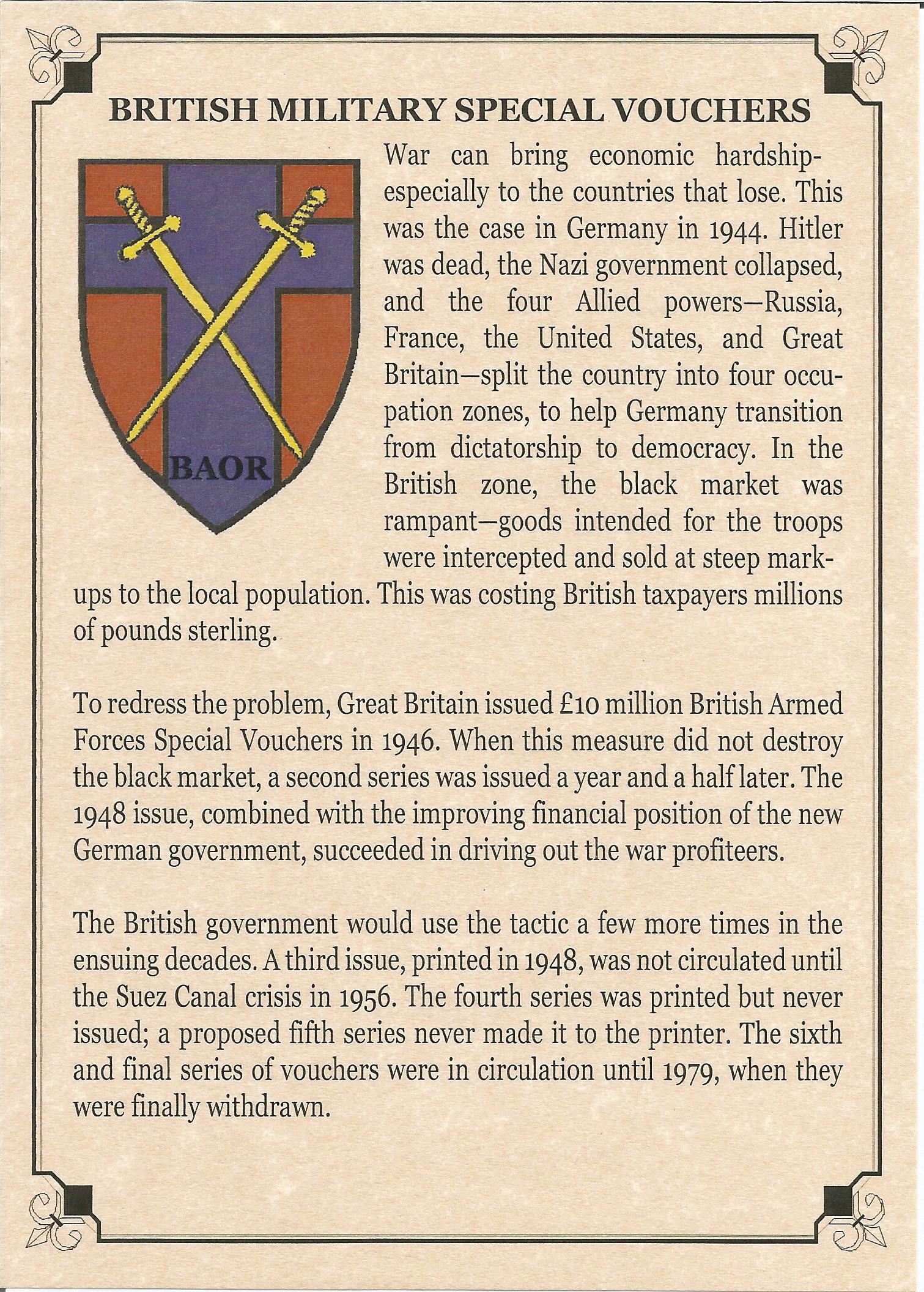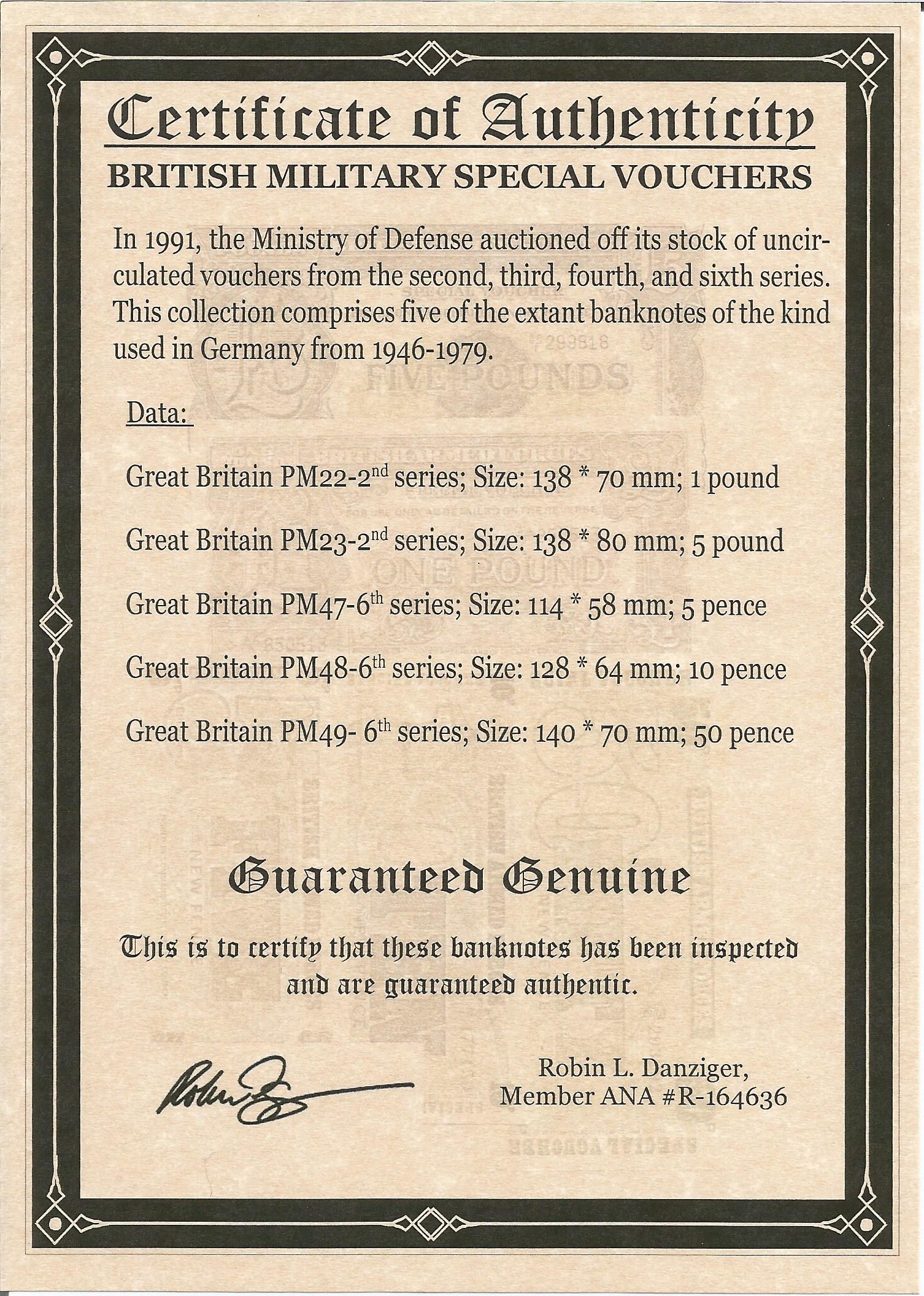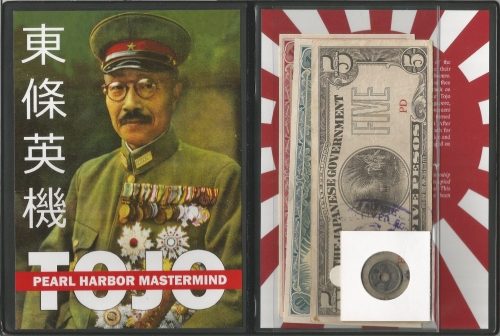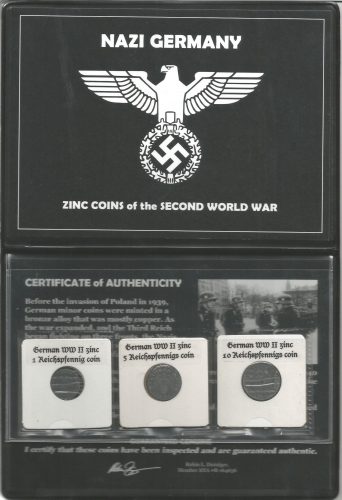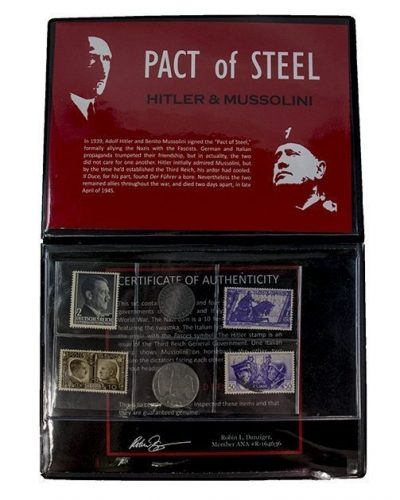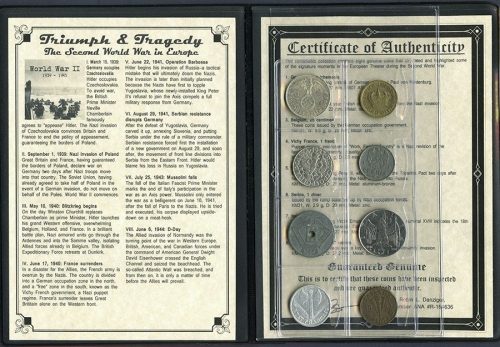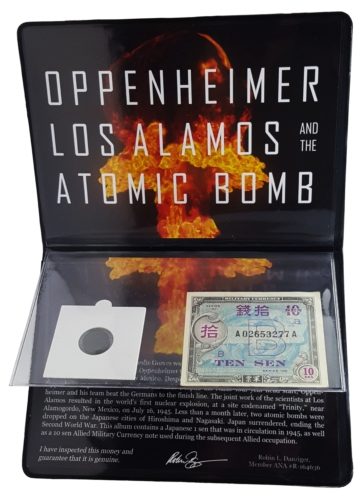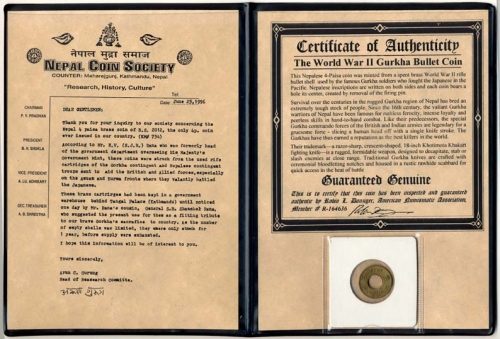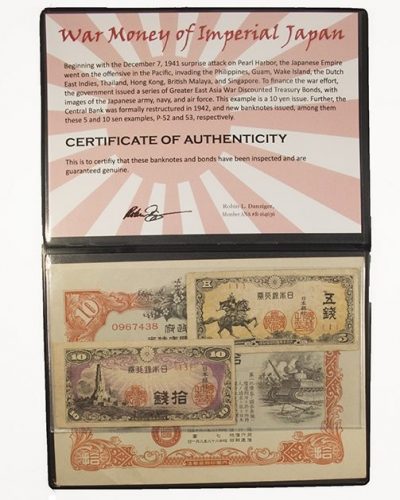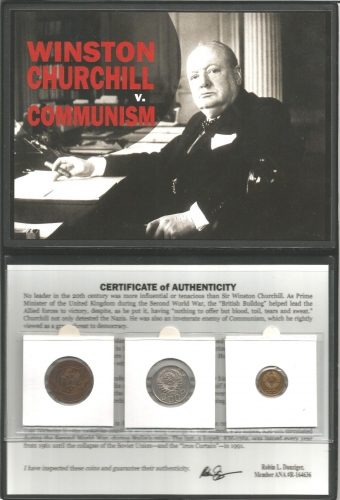Description
Five banknotes used as scrip by the British military occupying Germany’s Rhine Valley after the Second World War. War can bring economic hardship—especially to the countries that lose. This was the case in Germany in 1945. Hitler was dead, the Nazi government collapsed, and the four Allied powers—Russia, France, the United States, and Great Britain—split the country into four occupation zones, to help Germany transition from dictatorship to democracy. In the British zone, the black market was rampant—goods intended for the troops were intercepted and sold at steep mark-ups to the local population. This was costing British taxpayers millions of pounds sterling.–To redress the problem, Great Britain issued £10 million British Armed Forces Special Vouchers in 1946. When this measure did not destroy the black market, a second series was issued a year and a half later. The 1948 issue, combined with the improving financial position of the new German government, succeeded in driving out the war profiteers.–The British government would use the tactic a few more times in the ensuing decades. A third issue, printed in 1948, was not circulated until the Suez Canal crisis in 1956. The fourth series was printed but never issued; a proposed fifth series never made it to the printer. The sixth and final series of vouchers were in circulation until 1979, when they were finally withdrawn.–In 1991, the Ministry of Defense auctioned off its stock of uncirculated vouchers from the second, third, fourth, and sixth series. This collection comprises five of the extant banknotes of the kind used in Germany from 1946-1979.

